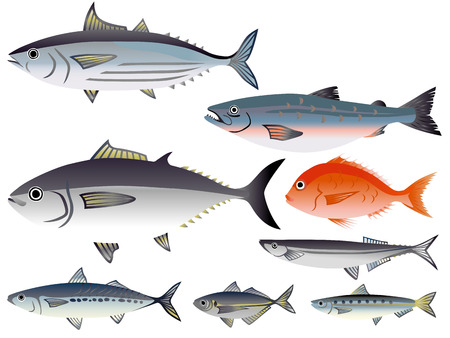1. Understanding the Dietary Needs of Your Fish
When setting up a community tank, its important to understand that different fish species have unique dietary needs. Some fish thrive on plant-based foods, while others require protein-rich diets. To keep your fish healthy and thriving, you need to provide the right food for each type.
Types of Fish Diets
Fish in a community tank generally fall into three main dietary categories: herbivores, carnivores, and omnivores. Each type has specific nutritional requirements that must be met to ensure their well-being.
Herbivores
Herbivorous fish primarily eat plant matter such as algae, vegetables, and plant-based fish food. They have longer digestive tracts designed to break down fibrous plant material. Common herbivorous species include certain types of plecos and mollies.
Carnivores
Carnivorous fish need a diet rich in proteins from sources like insects, small fish, or specialized protein-based pellets. These fish have shorter digestive tracts suited for digesting meat. Examples of carnivorous community fish include bettas and angelfish.
Omnivores
Omnivorous fish can eat both plant- and animal-based foods, making them the most flexible feeders in a community tank. They benefit from a balanced diet that includes flakes, pellets, live food, and vegetables. Popular omnivorous species include guppies and tetras.
Dietary Requirements by Fish Type
| Fish Type | Main Food Sources | Examples |
|---|---|---|
| Herbivores | Algae, blanched vegetables, spirulina flakes | Plecos, Mollies |
| Carnivores | Protein-rich pellets, frozen or live foods (brine shrimp, bloodworms) | Bettas, Angelfish |
| Omnivores | A mix of plant- and protein-based foods (flakes, pellets, veggies) | Tetras, Guppies |
The Importance of a Balanced Diet
No matter what type of fish you have, providing a varied diet is crucial for their health. Feeding only one type of food can lead to nutritional deficiencies. By understanding what your fish need to eat and offering a mix of appropriate foods, you can create a thriving community tank where all species coexist happily.
2. Choosing the Right Types of Fish Food
Providing a well-balanced diet is essential for maintaining a healthy community tank. Different fish species have unique dietary needs, so offering a variety of food types ensures all your fish get proper nutrition. Below are some common types of fish food and their benefits.
Flakes
Flake food is one of the most popular choices for feeding community tanks. It is suitable for top and mid-level feeders and comes in various formulas to meet specific dietary needs. However, flakes can lose nutrients quickly once they hit the water, so avoid overfeeding.
Pellets
Pellets come in floating, slow-sinking, or fast-sinking varieties, making them suitable for different feeding levels within the tank. They provide concentrated nutrition and are available in different sizes to accommodate various fish species.
Frozen Food
Frozen food options like brine shrimp, bloodworms, and daphnia offer high protein content and are excellent for carnivorous and omnivorous fish. These foods retain more nutrients than dried alternatives and are easy to portion.
Live Food
Live foods such as blackworms, daphnia, and feeder shrimp provide natural hunting stimulation for predatory fish. While highly nutritious, live foods require careful sourcing to prevent introducing parasites or diseases into your tank.
Comparison of Fish Food Types
| Food Type | Main Benefits | Best For |
|---|---|---|
| Flakes | Easily available, good for most community fish | Top & mid-level feeders |
| Pellets | Nutrient-dense, available in different sinking rates | Diverse feeding levels |
| Frozen Food | High in protein, retains more nutrients | Carnivorous & omnivorous fish |
| Live Food | Mimics natural diet, stimulates hunting instincts | Picky eaters & predatory fish |
![]()
3. Feeding Strategies for a Healthy Community Tank
Ensuring that all fish in your community tank get their fair share of food can be challenging. Some species are aggressive eaters, while others are shy and may not compete well for food. By using the right feeding techniques, you can minimize competition and aggression, ensuring that every fish gets the nutrition it needs.
Use Multiple Feeding Zones
One of the best ways to make sure all fish receive food is by distributing it across multiple areas in the tank. This prevents dominant fish from monopolizing the food source and allows timid species to eat comfortably.
Choose the Right Type of Food
Different fish species have different feeding habits. Some prefer to eat from the surface, while others feed in the middle or at the bottom of the tank. Using a combination of floating, sinking, and slow-sinking foods ensures that each type of fish gets access to its preferred feeding zone.
| Feeding Level | Food Type | Examples |
|---|---|---|
| Surface Feeders | Floating Pellets, Flakes | Guppies, Bettas, Danios |
| Mid-Level Feeders | Sinking Pellets, Slow-Sinking Flakes | Tetras, Barbs, Angelfish |
| Bottom Dwellers | Sinking Wafers, Algae Tablets | Corydoras, Loaches, Plecos |
Avoid Overfeeding and Uneaten Food Buildup
Overfeeding can lead to water quality issues and uneaten food accumulating at the bottom of the tank. To prevent this:
- Feed small amounts: Only offer what your fish can consume within 2-3 minutes.
- Use an automatic feeder: This helps regulate portions and feeding times.
- Siphon out uneaten food: Regular maintenance ensures a clean environment for your fish.
Diversify Feeding Times and Methods
If you have both active and shy feeders in your tank, consider varying how and when you feed them. For example:
- Feed in smaller portions multiple times a day: This reduces competition among aggressive eaters.
- Add food in different locations: Dropping food at different spots ensures all fish get access.
- Nocturnal feeding: If you have nocturnal species like catfish, feed them after lights go out so they can eat without competition.
Treats and Supplements for a Balanced Diet
A varied diet keeps fish healthy and enhances their natural colors. Consider adding these occasional treats:
- Daphnia and Brine Shrimp: High-protein snacks that boost energy levels.
- Zucchini Slices or Peas: Great for herbivorous fish like plecos.
- Bloodworms: A nutritious treat for carnivorous species.
The Key to a Peaceful Feeding Routine
The key to a thriving community tank is ensuring that all fish have access to food without stress or aggression. By using multiple feeding zones, choosing appropriate foods, and maintaining proper feeding schedules, you can create a balanced environment where every fish stays healthy and well-fed.
4. Avoiding Overfeeding and Maintaining Water Quality
Understand the Risks of Overfeeding
Overfeeding is one of the most common mistakes in a community tank. Excess food that isn’t eaten can decay, leading to poor water quality, algae growth, and harmful ammonia spikes. These conditions can stress your fish and make them more susceptible to disease.
How to Set a Proper Feeding Schedule
Establishing a feeding schedule helps ensure all fish receive the right amount of food without excess waste. A general rule is to feed small amounts that your fish can consume within 2-3 minutes. Here’s a simple guideline:
| Fish Type | Feeding Frequency |
|---|---|
| Small Community Fish (Tetras, Guppies) | 2-3 times daily |
| Bottom Feeders (Corydoras, Plecos) | Once daily, sinking food |
| Carnivorous Fish (Bettas, Cichlids) | Once or twice daily |
| Nocturnal Feeders (Catfish, Loaches) | Feed at night |
Keeping Your Tank’s Water Clean and Balanced
A clean tank is essential for a healthy community of fish. To prevent water contamination from uneaten food:
- Remove excess food: After feeding, check if there’s leftover food and remove it with a net or siphon.
- Siphon the substrate: Use a gravel vacuum weekly to remove debris and uneaten particles.
- Perform regular water changes: Change 20-30% of the water weekly to maintain balance.
- Monitor water parameters: Test for ammonia, nitrites, nitrates, and pH levels regularly.
- Add live plants: Plants help absorb excess nutrients and improve water quality naturally.
The Importance of Proper Filtration
A good filter helps break down waste and keeps the water clean. Make sure to clean or replace filter media as needed but avoid washing it with tap water, as this can kill beneficial bacteria.
Troubleshooting Common Overfeeding Issues
If you notice cloudy water, excessive algae, or fish acting sluggish, overfeeding could be the cause. Cut back on feedings and perform extra water changes to restore balance.
5. Supplementing Nutrition for a Well-Rounded Diet
Feeding your community tank the right diet goes beyond just providing staple fish food. To ensure your fish thrive, its essential to supplement their diet with fresh vegetables, protein sources, and vitamin-enriched foods. These additions help promote better health, enhance coloration, and extend the lifespan of your aquatic pets.
Why Supplementing Your Fish’s Diet Matters
Just like humans, fish benefit from a varied diet that includes multiple nutrient sources. While commercial flakes and pellets provide basic nutrition, they may lack some essential vitamins and minerals. By incorporating natural food sources, you can support better digestion, boost immunity, and encourage natural feeding behaviors.
Best Food Supplements for Community Fish
Different species in a community tank have unique dietary needs. Here’s a breakdown of some excellent food supplements you can add to their diet:
| Supplement | Benefits | Recommended Frequency |
|---|---|---|
| Fresh Vegetables (Zucchini, Spinach, Peas) | Rich in fiber, improves digestion, prevents bloating | 2-3 times per week |
| Protein Sources (Brine Shrimp, Bloodworms) | Enhances growth and coloration, great for carnivorous species | 1-2 times per week |
| Vitamin-Enriched Foods (Fortified Pellets, Liquid Supplements) | Boosts immune system and overall vitality | As needed based on dietary gaps |
| Algae Wafers or Spirulina | Supports herbivorous fish and enhances natural coloration | 2-3 times per week |
How to Properly Introduce Supplemental Foods
Preparing Fresh Vegetables
Blanch vegetables like zucchini or spinach by boiling them briefly before adding them to the tank. This softens the food for easier consumption while preserving nutrients.
Offering Protein Safely
If using live or frozen protein sources like bloodworms or brine shrimp, ensure they are rinsed properly before feeding. Avoid overfeeding as excessive protein can lead to water quality issues.
Using Vitamin-Enriched Foods Effectively
You can soak pellets or flakes in liquid vitamins before feeding to maximize nutrient absorption. Be mindful of dosage recommendations to avoid unnecessary waste.
Final Tips for a Balanced Diet
- Diversify feeding routines by rotating different supplements throughout the week.
- Observe how your fish react to new foods to ensure compatibility with their dietary needs.
- Avoid overfeeding to maintain good water quality and prevent health issues.
- Remove uneaten fresh food after a few hours to prevent tank contamination.
By incorporating supplemental foods into your fish’s diet, you provide them with essential nutrients that promote longevity and vibrant health. A well-fed community tank is not only beautiful but also full of active and happy fish!


